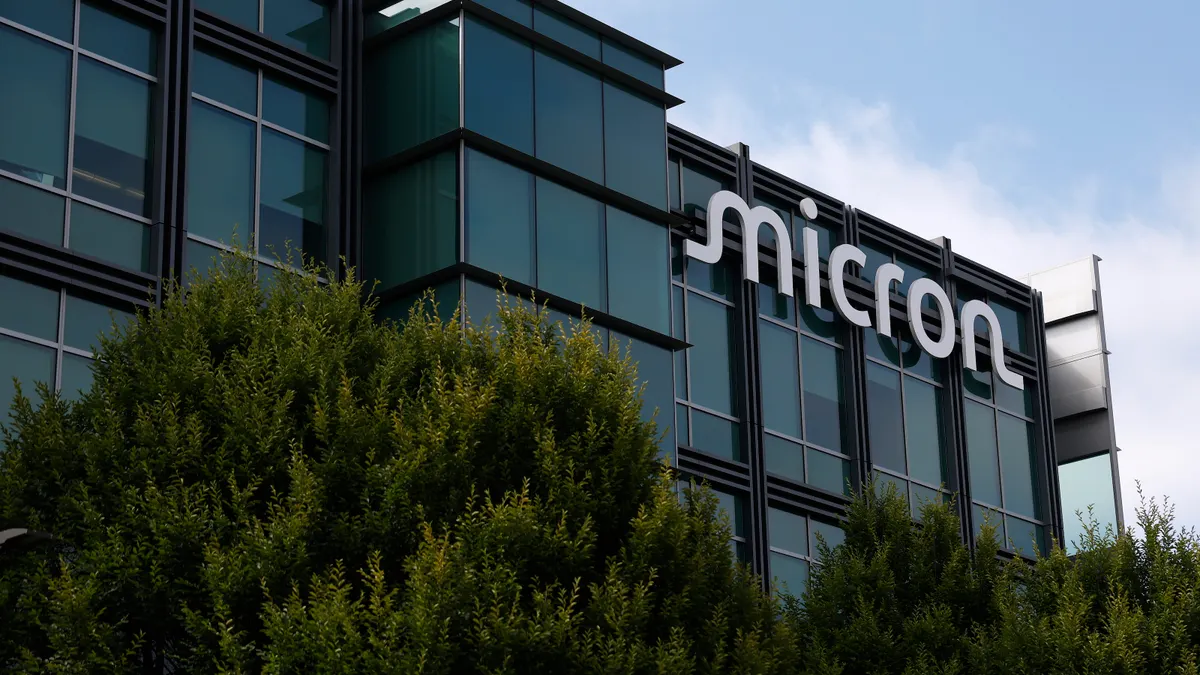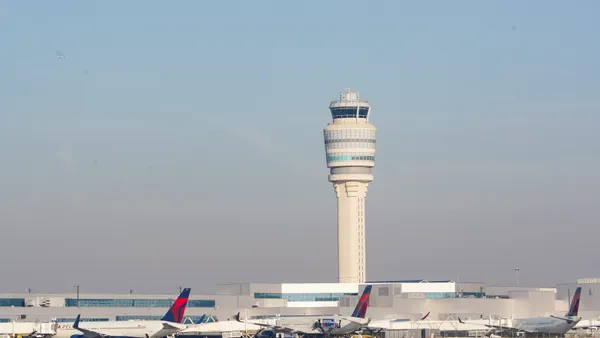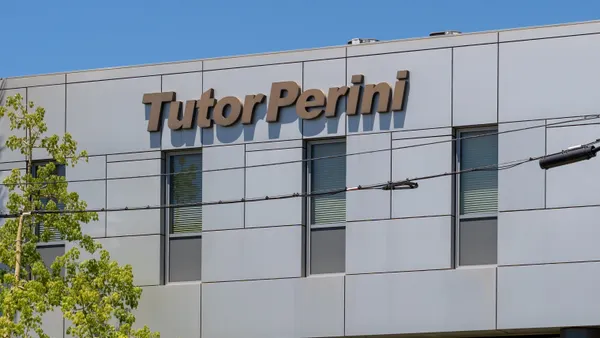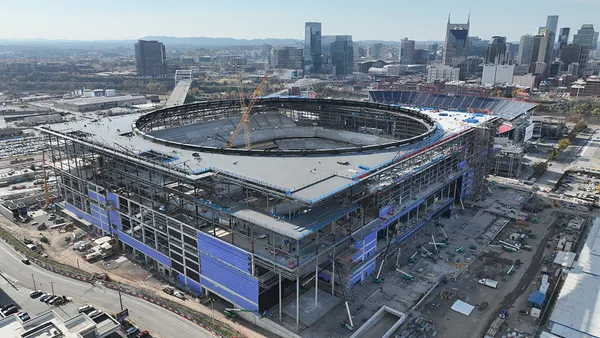Dive Brief:
-
The Iowa Department of Transportation (IDOT) plans to use a novel pier type to support a $1.2 billion Interstate 74 Mississippi River bridge crossing, the Quad-City Times reported.
-
The pier's unique Y-shape, which requires intersecting reinforcing steel and concrete, pushed the project team to test the pier structure in advance.
-
Inspectors are using a mock pier created on-site last week to check for concrete consistency and test its structural performance before building more than 60 of them for the new bridge. Bridge construction is expected to last three and a half years.
Dive Insight:
The state of the country's bridges is only slightly better than the condition of its infrastructure overall — and that's not saying much. The American Society of Civil Engineers gave U.S. bridges a C+ and the country’s infrastructure a D+ in its latest scorecard, saying the country has a $123 billion backlog of bridge repair work.
Some of that work will be more than simple maintenance. The American Road and Transportation Builders noted in a February report that nearly 56,000 bridges (or roughly 9% of all spans) are structurally deficient. Iowa, Pennsylvania and Oklahoma lead U.S. states in the number of deficient bridges. These bridges aren't "imminently unsafe," ARTBA wrote, but one or more of its key elements is in disrepair.
A separate ARTBA report, published on the decade anniversary of the deadly I-35W bridge collapse in Minneapolis, noted that the number of structurally deficient bridges in the U.S. decreased from 2007 to 2016. Yet even at the current rate of investment, making the necessary repairs and upgrades will take three decades. That's due in part to the slow nature of such funding.
The U.S. Department of Transportation's Federal Highway Administration issued one of its largest emergency repair grants in history earlier this year, with $768.2 million allocated to repair roads and bridges damaged due to storms or other catastrophic events in 40 states.
Meanwhile, state transportation agencies and academic groups are undertaking research and implementing new practices to make bridges safer and speed up repairs.
The Minnesota Department of Transportation is teaming up with Minneapolis-based WSB & Associates to devise a scheduling tool for bridge construction in the state. MNDOT hopes to use that information to create guidelines for producing different types of bridges, which could inform recommendations on when to use accelerated bridge construction (ABC) methods.
Sensors to monitor bridges' structural integrity and identify necessary repairs, new acoustic-based methods to test bridges for flaws, and even small-scale dampers to mitigate the vibrations caused by the use of lighter-weight materials are also being researched.














